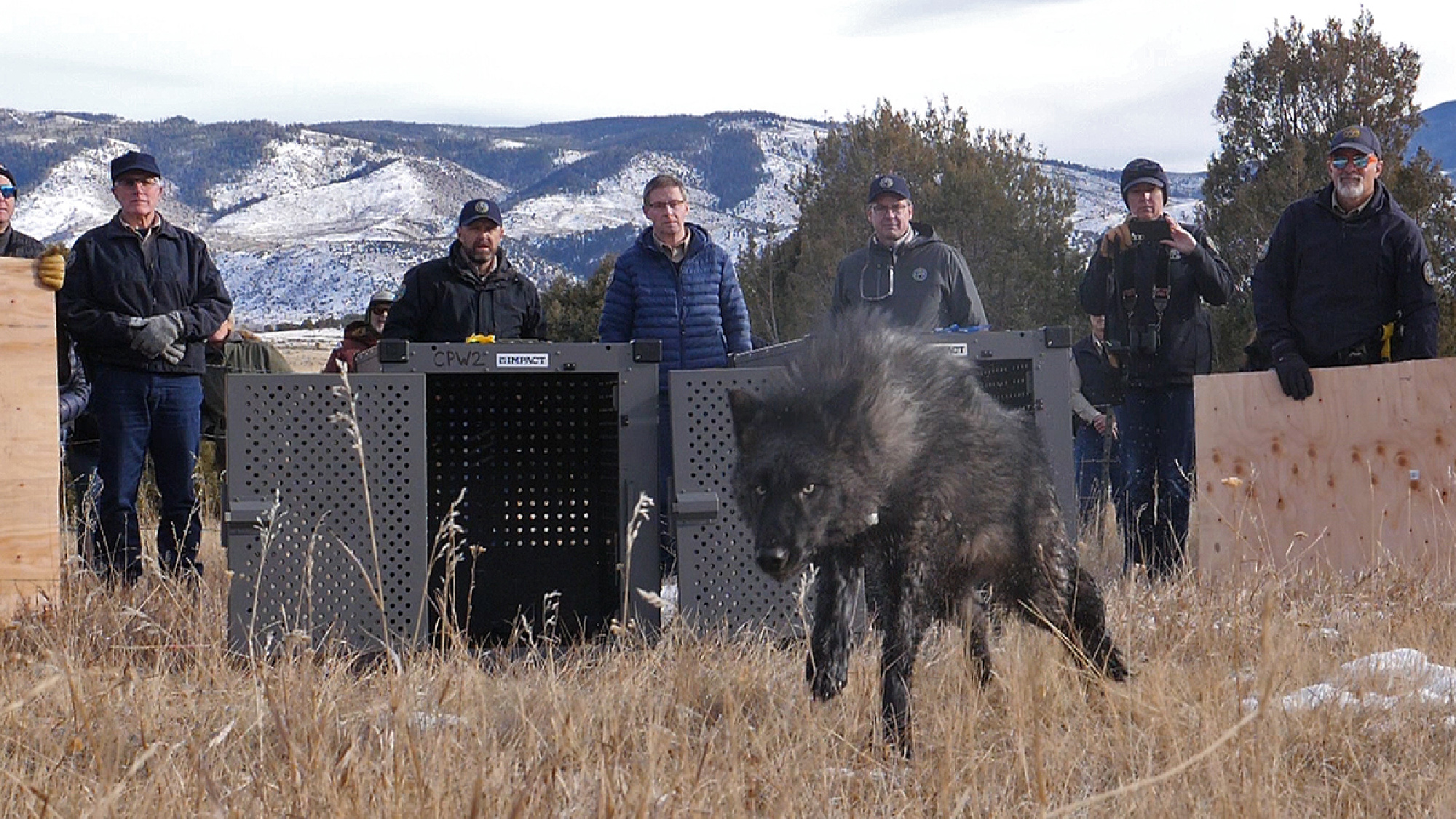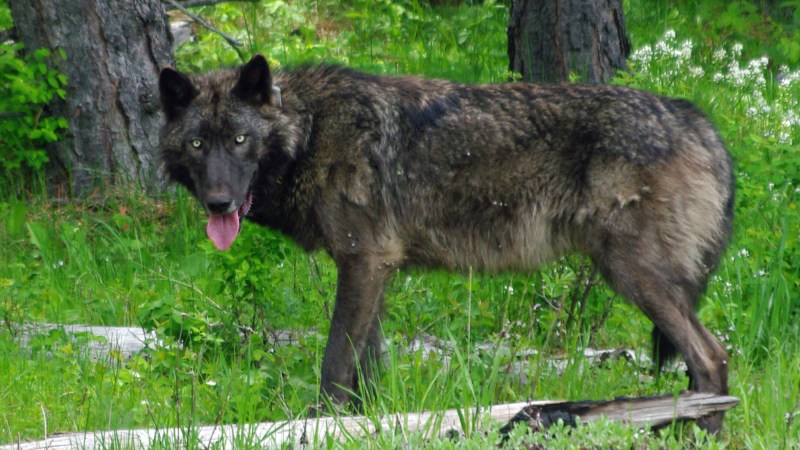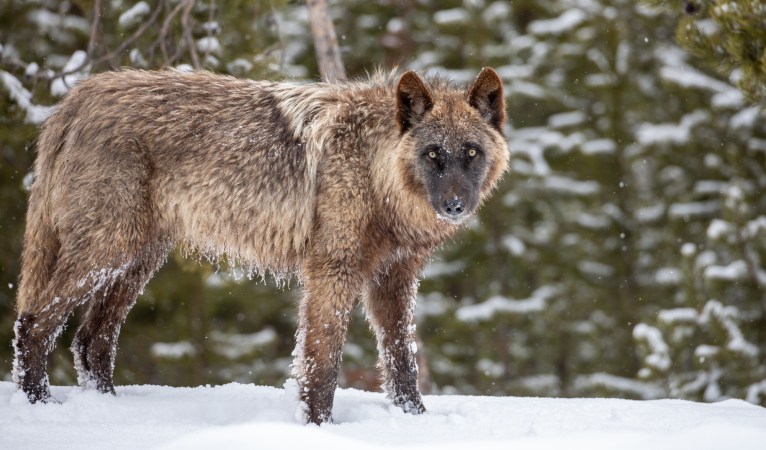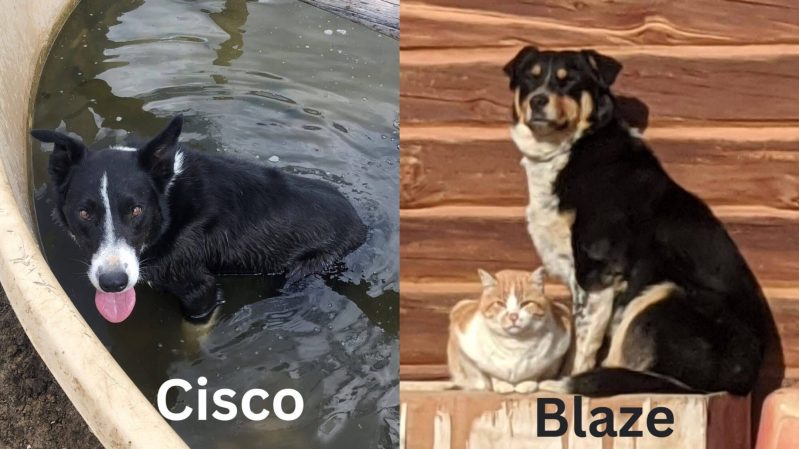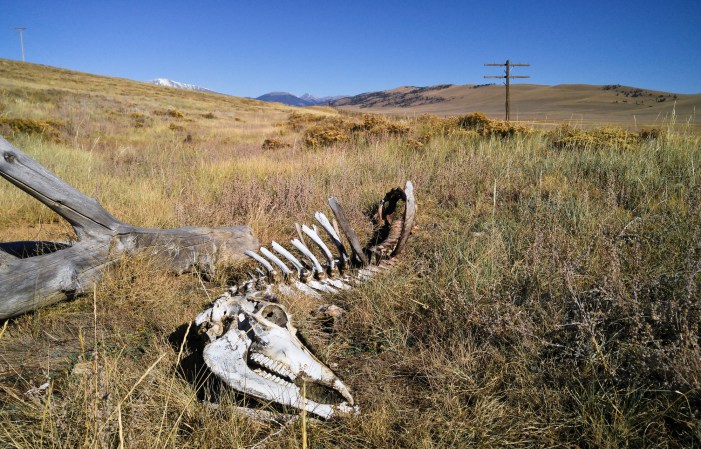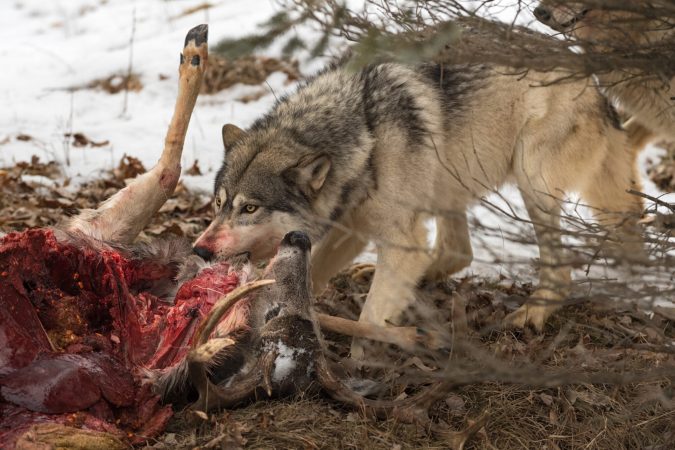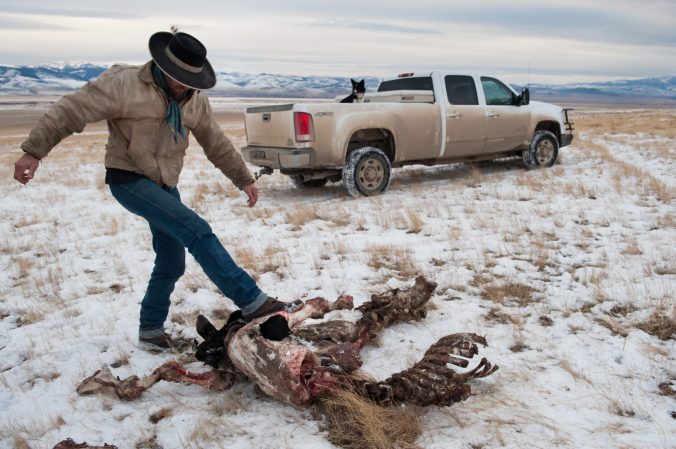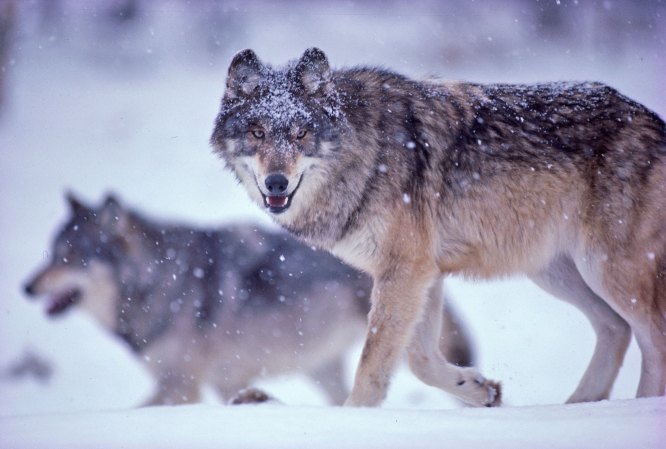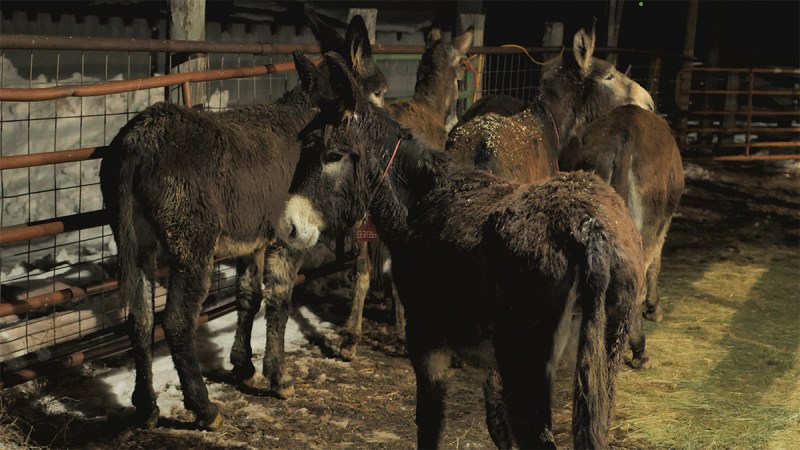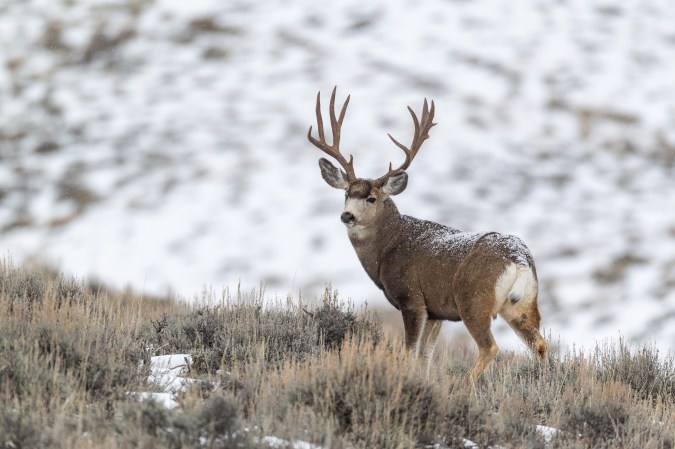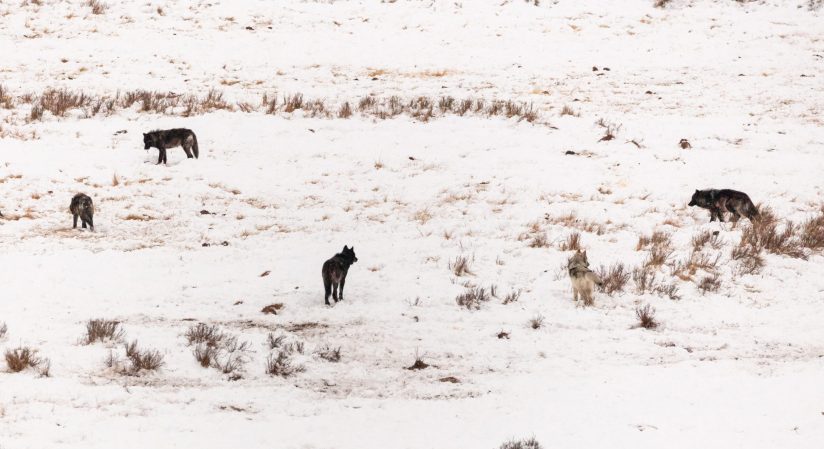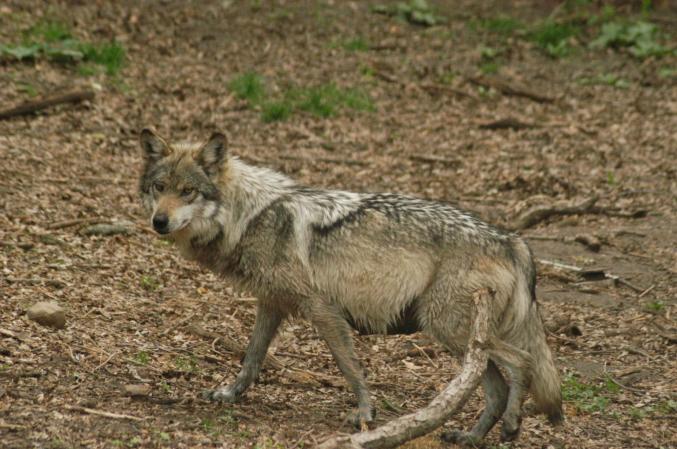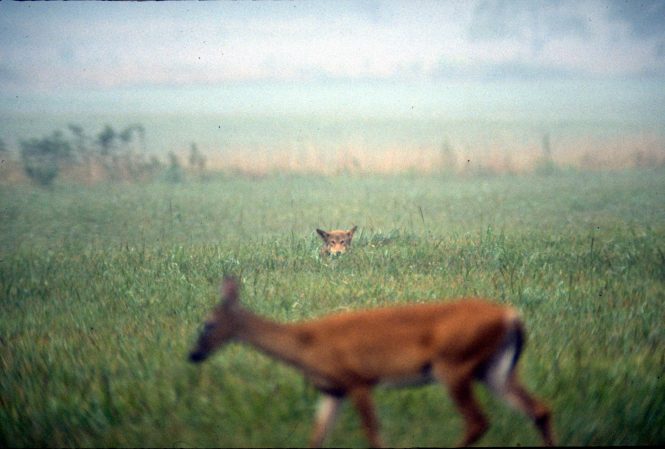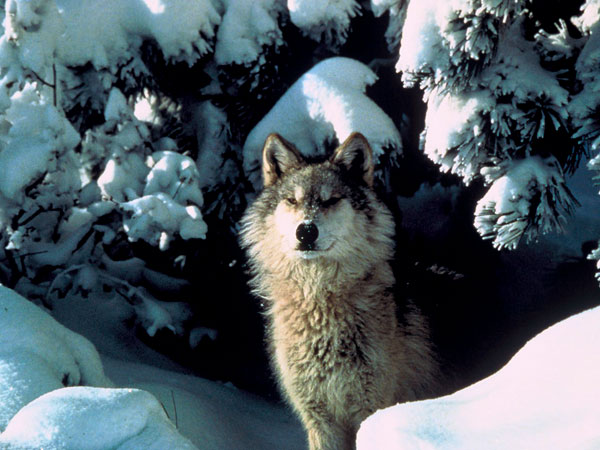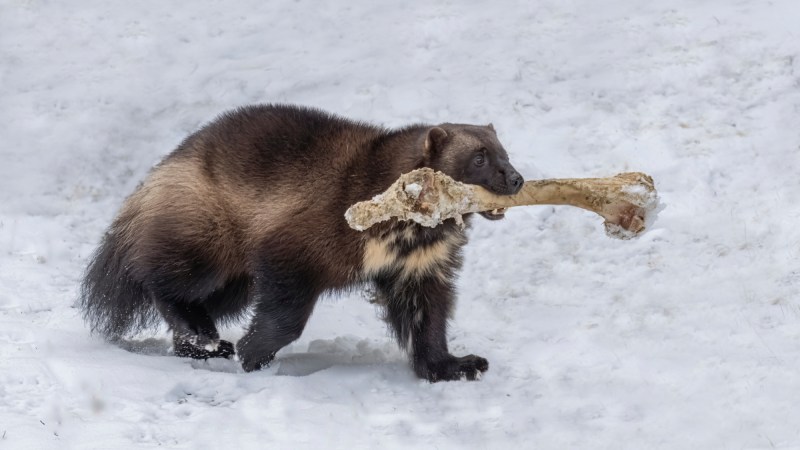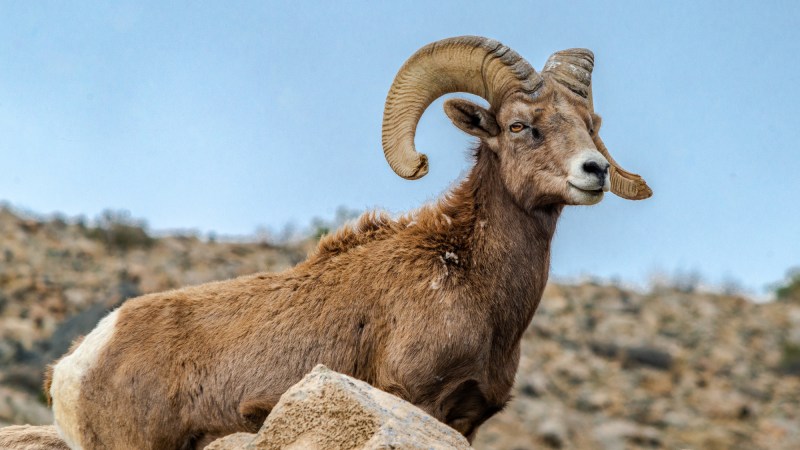Colorado Parks and Wildlife officials released five collared wolves onto public land in Grand County on Monday, marking the next phase of a years-long effort to create a self-sustaining wolf population in the Centennial State. The controversial effort began with Proposition 114, a 2020 state ballot initiative calling for a swift wolf reintroduction west of the Continental Divide that Colorado voters passed by a narrow margin of less than 2 percent.
CPW officials captured and sedated two juvenile females, two juvenile males, and one adult male in northeastern Oregon on Sunday, according to a press release. Biologists and veterinarians collected data and genetic samples from the five wolves, vaccinated and collared them, and transported them to Colorado for the release.
The roster of wolves includes:
- 2302-OR: Juvenile female, black color, 68 pounds, Five Points Pack
- 2303-OR: Juvenile male, gray color, 76 pounds, Five Points Pack
- 2304-OR: Juvenile female, gray color, 76 pounds, Noregaard Pack
- 2305-OR: Juvenile male, black color, 93 pounds, Noregaard Pack
- 2307-OR: Adult male, gray color, 108 pounds, Wenaha Pack
These wolves are the first five individuals of what will be a much larger reintroduction effort, according to CPW. The agency plans to release 10 to 15 wolves by mid-March, and 30 to 50 wolves total in the next three to five years. Wolves have ranged into Colorado in recent years, with CPW confirming 10 sightings in the state since 2004, some of them involving multiple wolves. The agency has not been able to confirm whether any of those wolves reside in Colorado.
Ranchers in the area vocalize fierce opposition to the reintroduction, especially after a string of confirmed wolf depredations on cattle occurred in December 2022 and January 2023 in Jackson County, which borders Grand County to the north.
“The ranchers and the community have done a lot of work to help prevent more depredations, but depredations still happen,” North Park Stockgrowers Association president Adam VanValkenburg told OL contributor Keegan Sentner. “Our important thing is lethal control. Not in the sense of going on hunting expeditions, but having the ability to kill wolves preying on our cattle.”
Some hunters share similar concerns for elk and deer populations. But proponents of the reintroduction point out that elk and mule deer evolved with wolves and other predators on the same landscape, and that human encroachment and shrinking habitat availability are bigger concerns.
“Hunters and a lot of outfitters are terrified about the elk herds being decimated by wolves,” Colorado rancher Tony Prendergast told Aspen Journalism. “But what’s decimating the elk herds is cars and people and homes being built, and all the human recreational activities in elk calving grounds that are just ramping up and up.”
Whether Coloradoans like it or not, wolves are now formally living on the landscape — 13 days earlier than required by Proposition 114, CPW director Jeff Davis points out.
“This is a historic day for Colorado,” Davis said in the press release. “We want to thank the U.S. Fish and Wildlife Service for their work to complete and approve the 10(j) designation that lists wolves in Colorado as a nonessential, experimental population. This helps us to follow all of the conflict mitigation plans we accounted for in the final Colorado Wolf Restoration and Management Plan. Having the rule in place in early December helped CPW to stay on track to reintroduce wolves in 2023 with the ability to use the appropriate management tools. We’ll continue releasing animals based on our plan to have wolves not just survive but thrive in Colorado as they did a century ago.”
Read Next: How Many Wolves Should There Be in Colorado?
The 10(j) designation Davis mentions was finalized Dec. 8. That means that the reintroduced wolves are considered an experimental, nonessential population with “threatened” status under the Endangered Species Act and will be managed accordingly, rather than being subject to the strict laws of an “endangered” status.

